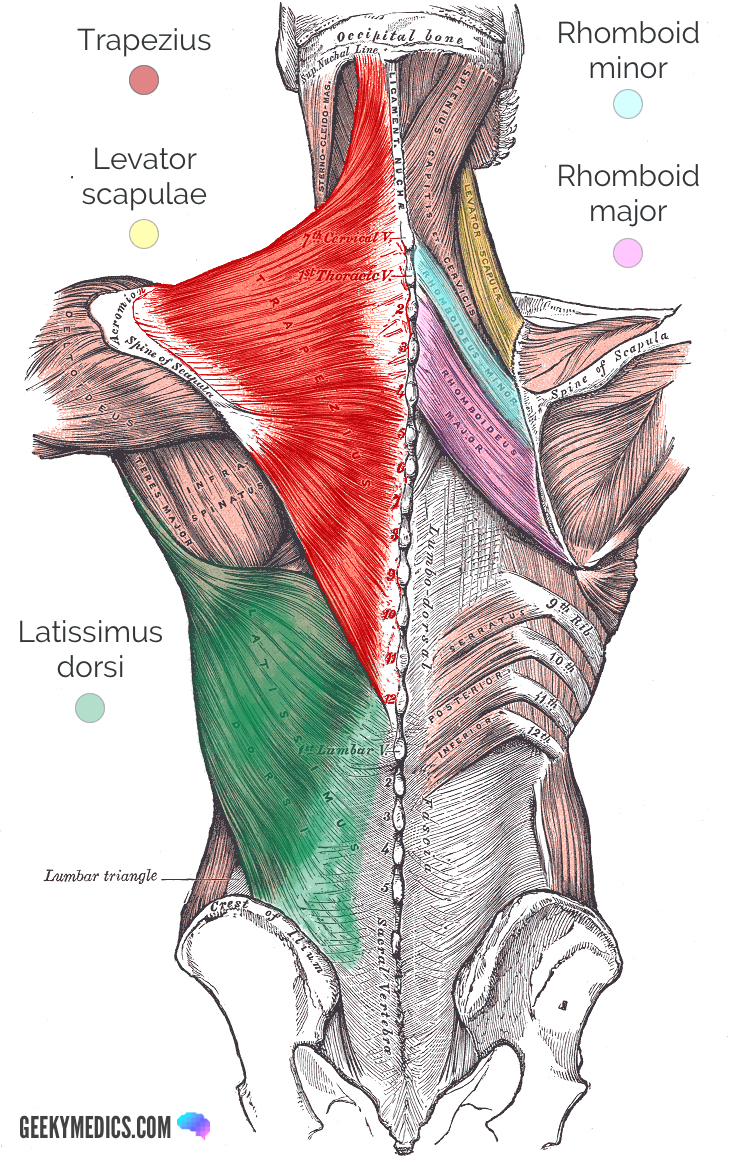Find Out 15+ Truths About Antamony Of Your Back Your Friends Missed to Let You in!
Antamony Of Your Back | See full list on verywellhealth.com 1 your spine in this region has a natural inward curve. What is the anatomy of the back? Your traps serve to elevate your shoulders. These stretches can improve the flexibility and mobility of your spine, providing for more freedom of motion.
Each individual muscle or muscle group in your back serves a distinct function. This curve, called lordosis, helps to: Human anatomy · july 23, 2016. See full list on verywellhealth.com Your back muscles work by stabilizing and moving your spine, trunk, and shoulders.

Your back muscles work by stabilizing and moving your spine, trunk, and shoulders. They also attach your shoulders and pelvis to the trunk, creating a bridge between your upper body and lower body. Your therapist can assess your back muscles and determine what treatments are needed for your condition. Covering an expanse from the neck to the tailbone, the back muscles are responsible for a broad range of functions, from extending the spine to shrugging the shoulders. Jul 23, 2016 · anatomy of the back organs. What is the anatomy of the back? The middle and lower trapezius function to retract your shoulders, pulling them backward. While this is happening, your middle and lower trapezius contracts to stabilize your shoulder blade. Apr 12, 2018 · the back anatomy includes the latissimus dorsi, trapezius, erector spinae, rhomboid, and the teres major. Your traps serve to elevate your shoulders. What is the structure of the back? Back strengthening exercises may include the reverse fly, the prone superman, or prone hip extension. See full list on verywellhealth.com
Covering an expanse from the neck to the tailbone, the back muscles are responsible for a broad range of functions, from extending the spine to shrugging the shoulders. Mar 16, 2020 · common conditions affecting the back abnormal curves in the spine. See full list on verywellhealth.com Back strengthening exercises may include the reverse fly, the prone superman, or prone hip extension. Search only for antamony of your back

Your lower back (lumbar spine) is the anatomic region between your lowest rib and the upper part of the buttock. 1 your spine in this region has a natural inward curve. Each individual muscle or muscle group in your back serves a distinct function. Jul 23, 2016 · anatomy of the back organs. This curve, called lordosis, helps to: Many of the muscles work together; The anatomy of the back refers to the muscles of the back, as well as the bones of the scapulae, ribcage, and spine. Scoliosis causes a sideways curvature of the spine. Your traps serve to elevate your shoulders. These layers of back muscles help to mobilize and stabilize your trunk during your day to day activities. The function of your back muscles varies depending on the specific muscle and the direction of pull of each muscle. The rhomboids serve to retract and stabilize your shoulder blades. It is made of the spine, discs, nerves, muscles, tendons, ligaments, and other structures.
The back functions are many, such as to house and protect the spinal cord, hold the body and head upright, and adjust the movements of the upper and lower limbs. See full list on verywellhealth.com Jul 23, 2016 · anatomy of the back organs. Keeping your back muscles strong can help you recover from back injuries and may prevent future problems with your back. Massagehas been shown to improve local blood flow to injured back muscles and may increase tissue extensibility, leading to improved back moti.

Your latissimus functions to extend and medially rotate your upper arm bone. Covering an expanse from the neck to the tailbone, the back muscles are responsible for a broad range of functions, from extending the spine to shrugging the shoulders. Antamony of your back : The back functions are many, such as to house and protect the spinal cord, hold the body and head upright, and adjust the movements of the upper and lower limbs. The heart muscle, smooth muscles, and skeletal. Back strengthening exercises may include the reverse fly, the prone superman, or prone hip extension. May 31, 2021 · back anatomy the back is the body region between the neck and the gluteal regions. Balance the weight of your head on top of your spine evenly distribute weights from your upper body into the lower extremities Your lower back (lumbar spine) is the anatomic region between your lowest rib and the upper part of the buttock. The rhomboids serve to retract and stabilize your shoulder blades. Many of the muscles work together; On this page, you'll learn about each of these muscles, their locations and functional anatomy. Keeping your back muscles strong can help you recover from back injuries and may prevent future problems with your back.
Antamony Of Your Back: Keeping your back muscles strong can help you recover from back injuries and may prevent future problems with your back.
0 Response to "Find Out 15+ Truths About Antamony Of Your Back Your Friends Missed to Let You in!"
Post a Comment